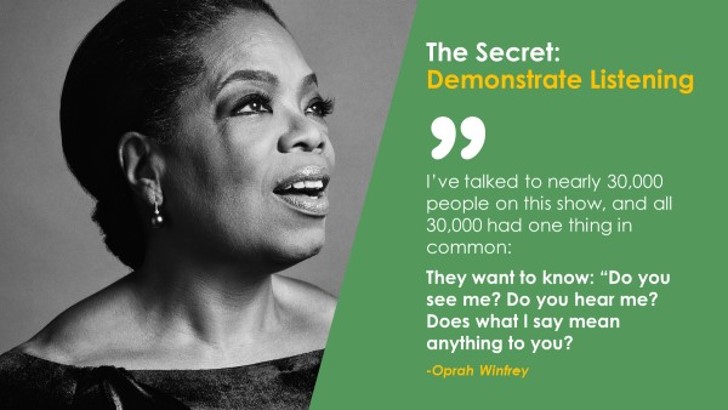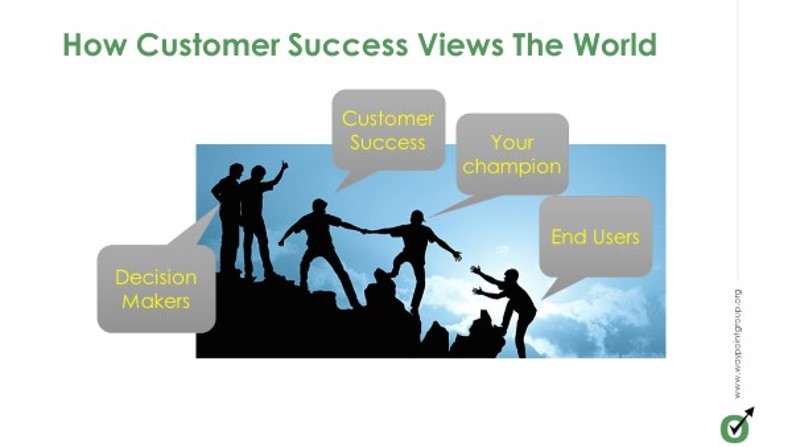Search Waypoint Resources
Part 3 in the Series: Expansion Selling Starts with Listening

Marketing Must Catch Up With the New Realities:
Leverage Marketing’s Win/Loss Framework to Accelerate Your Career
Part 3 in the Series: Expansion Selling Starts with Listening
The first and second installments of this series discussed the importance of optimizing Marketing’s time and resources by paying attention to Net Revenue Retention (NRR) and customer lifetime value. Companies that show strong retention and expansion-sales (“land and expand”) are given higher valuation multiples. Driving shareholder value, whether you are public or privately held, rewards everyone.
More specifically, we’ve discussed the importance of knowing if the stakeholders – those people that make renewal and expansion decisions – are happy with their experience and are perceiving their desired outcomes (success). Here’s how to execute an effective “listening” program.
The Forest for The Trees
The good news is that those existing accounts are in the position to be open and share. After all, they want to be successful with the offering you’ve provided, and to do that there must be dialogs.
Where Sales needs to develop relationships, articulate clear and compelling value props, and gain insight through expert discovery, Customer Success Managers/Account Managers aim to lead their accounts through a smooth experience that provides the customers desired outcomes.
Yet the context of their daily interactions often prevents this critical motion because they are often working on tactical execution with end users, champions, administrators, and the like. They are providing training, best practices, and work-arounds. They backstop Support and Professional Services. They are processing transactions and handling customer issues.
Neither party tends to have an opportunity to see the big picture while executing.
Enter the Feedback Loop
Here’s a simple exercise: I ask you to imagine you are the Executive Assistant to the CFO of Acme, Inc. Every time the CFO goes on a trip you book ground transportation with Industrial Limos And Lifts (ILL). Sometimes the ride goes very well for your boss, and sometimes it goes horribly wrong. When it goes wrong you are working with the people on the ground, which is unlikely to be your Account Manager from ILL. And because you support the CFO with standardized vendors, your colleagues booking ground transportation for their bosses have similar experiences.
 Now imagine you get this call, “Hi Pat, this is Chris from Industrial Limos. I know you are using our service and communicating with us every day, but since you have been working with us for a short 3 months it’s critical to me that we understand what is working well for you, and what needs improvement. I’d like to send you a brief, ~3-minute assessment questionnaire to understand the current state of things and then work with you to drive the improvements to give you a better experience and good outcomes for us both. Would you be willing to participate?”
Now imagine you get this call, “Hi Pat, this is Chris from Industrial Limos. I know you are using our service and communicating with us every day, but since you have been working with us for a short 3 months it’s critical to me that we understand what is working well for you, and what needs improvement. I’d like to send you a brief, ~3-minute assessment questionnaire to understand the current state of things and then work with you to drive the improvements to give you a better experience and good outcomes for us both. Would you be willing to participate?”
Who wouldn’t? I mean, people have been trained to ignore “Your feedback is important to us” emails by ridiculous vendors that don’t listen. Instead, this message delivers a clear What’s-In-It-For-Me to want to expose my feedback.
There are certainly details here that we can’t get into for this article (such as questionnaire design, lifecycle triggers, persona development, etc) but those execution tactics are things that Marketing manages every day. Suffice it to say that we see participation rates (often called “response rates”) of 80% and higher (ask me for examples or details). When’s the last time you executed a marketing campaign that acquired 80%+ engagement?!? The fact is that these existing customers are already in a position to share IF they know you’re listening and committed to addressing concerns or celebrating successes.
And consider this: people change jobs all the time, and this play must provide an ideal opportunity to understand the buying process as it evolves. Here’s where a bit of magic happens: After gaining my agreement to participate, the next question from Pat over at ILL would be, “We’d like to make sure we’re not “single threading” and need to be addressing everyone’s concerns. Who else is in a good position to assess the value and the relationship between our companies?” Obviously there’s a little more to it than that, but you get the idea: Because of the “listening” context, Account Teams are in an ideal position to ask specifically about the customer’s buying process and who’s involved.
Boom! More advocates identified to activate (“engage”). Oh, and your CRM database is now up to date for that account. (Another thing to consider is your bounce rate… is it growing over time? Wouldn’t you like it kept up to date with regular outreach to all the right contacts?)
Through this series of articles we’ve discussed Net Revenue Retention (NRR), allocating marketing resources to existing customers (because even customers are prospects), and setting up a listening program. You’re on your way to strategic gains by
- Identifying and activating “promoters” (stakeholders who perceive value, success, and positive experiences),
- Identifying and converting (or at least, negating) detractors (those stakeholders not happy with the experience and/or outcomes from working with you), and
- Understanding the unmet needs of those folks in between (“passives”).
And you’ll need a metric to keep focus. More on that next time.